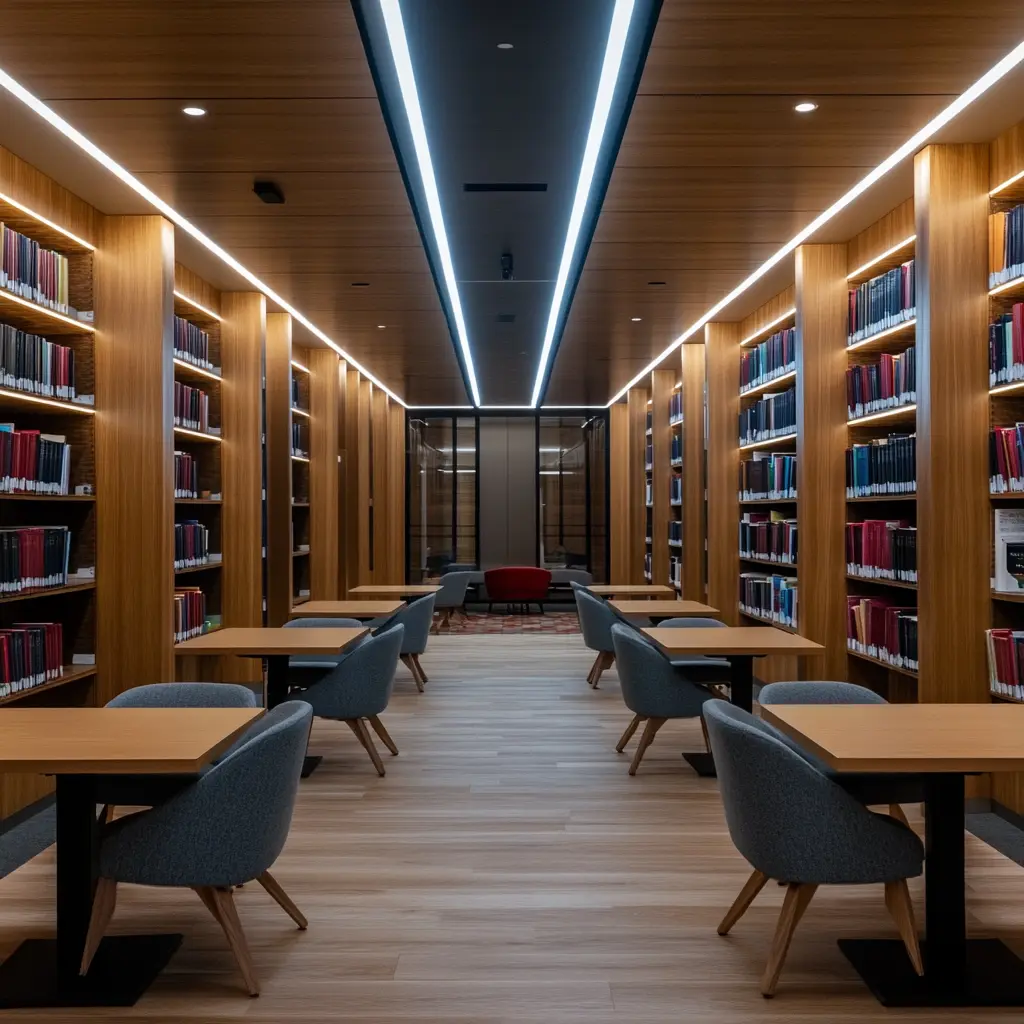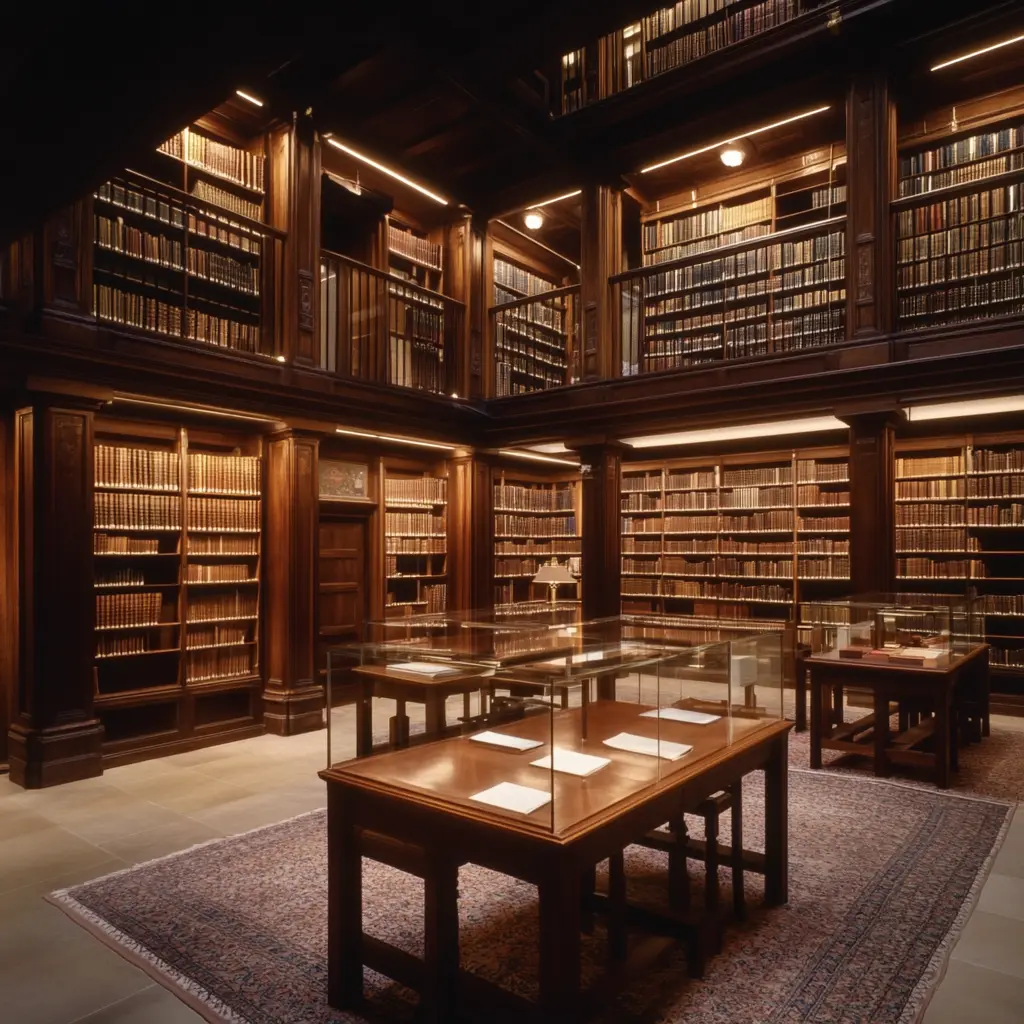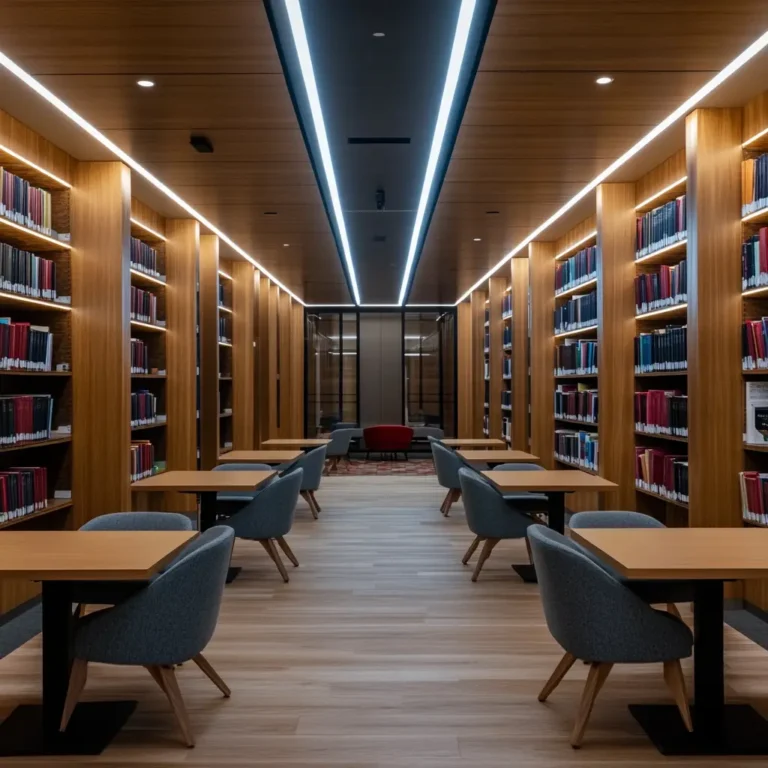Library zoning plays a crucial role in creating an organized, functional, and user-friendly space. Whether designing a public library, university library, or a personal reading nook, proper zoning helps improve accessibility, efficiency, and comfort. By strategically dividing a library into different zones, you can cater to various needs, from quiet study areas to interactive spaces for group discussions.
Table of Contents
1. Library Zoning for Quiet Study Areas
A well-designed library should have dedicated quiet zones for reading and studying. To achieve this:
- Place study areas away from high-traffic zones.
- Use sound-absorbing materials like carpets and acoustic panels.
- Arrange individual desks or booths to minimize distractions.
- Ensure good lighting with task lamps or natural light sources.

2. Interactive Zones for Group Discussions
Libraries are not just for silent reading; they also serve as collaboration hubs. Create an interactive zone by:
- Incorporating round tables and comfortable seating.
- Providing whiteboards or digital screens for brainstorming sessions.
- Placing group areas away from quiet zones to avoid disruptions.
3. Children’s Section for Young Readers
A dedicated children’s zone encourages early reading habits and makes libraries more family-friendly. Design the area with:
- Low bookshelves for easy access.
- Colorful seating and reading nooks.
- Engaging decor like murals or playful elements.
- Interactive storytelling areas with soft rugs and cushions.
4. Digital Media & Technology Integration
Modern libraries require zones for digital learning and technology use. Enhance this space by:
- Adding computer stations with high-speed internet.
- Creating areas for e-books and audiobooks.
- Setting up a printing/scanning section.
- Providing comfortable seating with power outlets for laptops.
5. Lounge & Relaxation Zones
Not all library visitors come for intensive study. A relaxation zone allows patrons to enjoy casual reading and leisure time. Features of this zone may include:
- Cozy seating like bean bags or sofas.
- Soft lighting and warm decor.
- Magazines and newspapers for light reading.
- A coffee station for added comfort.
6. Special Collections & Research Sections
Libraries with rare books or research materials should have a dedicated section for preservation and access. This zone should:
- Be temperature- and humidity-controlled.
- Feature secure display cases for rare books.
- Have restricted access for special researchers.

7. Library Zoning for Multipurpose Event Spaces
Many libraries host workshops, author talks, and community events. A multipurpose zone should include:
- Flexible seating arrangements for various event formats.
- AV equipment for presentations.
- A booking system for event scheduling.
FAQs About Library Zoning
Q1: Why is library zoning important?
A1: Library zoning ensures efficient space utilization, improves user experience, and creates designated areas for different activities.
Q2: How can I reduce noise in a library?
A2: Use soundproofing materials, arrange furniture strategically, and place noisy zones away from study areas.
Q3: What is the best way to design a library for children?
A3: Use low shelves, bright colors, interactive reading spaces, and engaging decor to create an inviting atmosphere.
Q4: Can small libraries benefit from zoning?
A4: Yes! Even in limited spaces, strategic zoning can enhance functionality and improve user satisfaction.
Q5: How can digital integration improve library zoning?
A5: Digital media zones with e-books, audiobooks, and computer stations offer modern learning experiences.
For more room-specific decor ideas, check out this guide. With these smart library zoning strategies, you can create a space that meets the diverse needs of readers, researchers, and community members alike.

